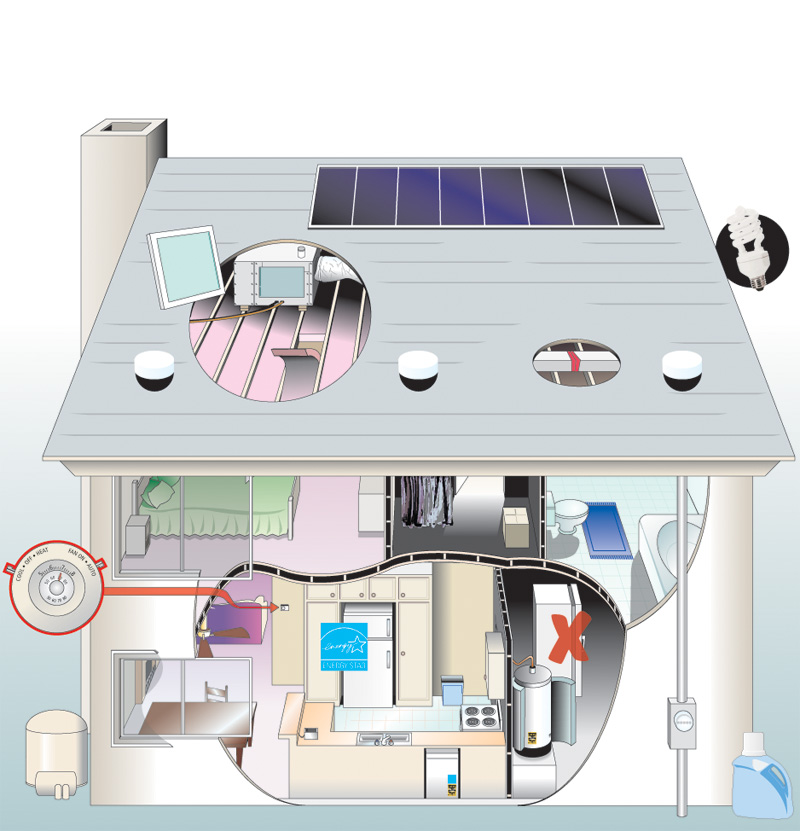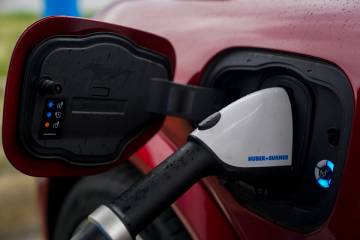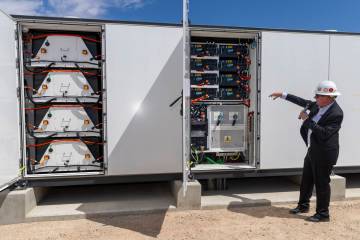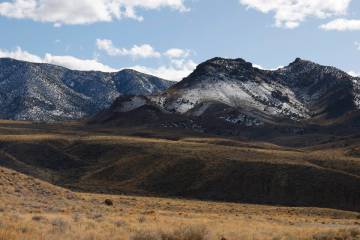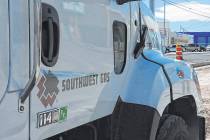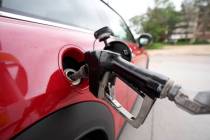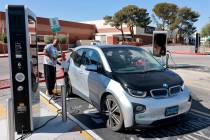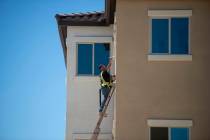CUT YOUR ENERGY BILLS
1. Reset your thermostat
Local power utility NV Energy recommends its customers keep their thermostats at 68 in the winter and 78 in the summer. As the weather warms, push the temperature to 80 or 82 when you're not home and boost your savings further.
Do it yourself? Yes
Out-of-pocket cost: None
Savings: For each degree in adjustment, you'll save 2 percent on your energy bill
Payback in years: Immediate
2. Fight energy vampires
The typical home contains countless smaller appliances that stay plugged in when they're not on. Televisions, coffee makers, computers, toasters, cell phone chargers -- all suck power from the grid even when they're not running. Pull the plug on any electronics you're not operating. Les Lazareck, owner of efficiency consulting firm Home Energy Connection, suggests putting timers on computers and other minor appliances so they're turned off routinely.
Do it yourself? Yes
Out-of-pocket cost: None
Savings: As much as 40 watts per piece of equipment, or $75 a year on a personal computer
Payback in years: Immediate
3. Don't like it hot
Too many consumers heat their water to unnecessarily high temperatures. Turn your water heater's thermostat down to 120 degrees or the warm setting if there's no degree gauge. Soap, not hot water, kills germs, so don't fret that your clothes or dishes won't get clean.
Do it yourself? Yes
Out-of-pocket cost: None
Savings: 3-5 percent for every 10 degrees
Payback in years: Immediate
4. Ditch the second fridge
Sure, it was convenient to move your old refrigerator to your garage when you upgraded a few years ago. After all, where could you haul it? But ask yourself if you really need that extra appliance. Your garage's interior can jump to 140 degrees in the summer. What's more, garage fridges tend to be older, less-efficient models, noted Greg Kern, NV Energy's director of customer renewable generation and energy efficiency. And if you don't keep the cooler full, you magnify the cost of running it. Here's the easiest solution: Let NV Energy take it away and recycle it. They'll pay you $30 for the courtesy of handing over your outmoded icebox.
Do it yourself? No. Call NV Energy
Out-of-pocket cost: None; you net $30
Savings: Around $150 a year, or more on older models
Payback in years: Immediate
5. Keep the light out
Houses that face south or west take a beating from the sun in the hottest months. Close your shades, shutters or drapes to keep rays out of the home.
Do it yourself? Yes
Out-of-pocket cost: None
Savings: Can cut your power bill in half
Payback in years: Immediate
6. Work with the power company
Through its Cool Share program, NV Energy will install a programmable thermostat in your home. On the hottest days, the utility can nudge up the setting on your thermostat a couple of degrees to reduce peak energy demand. You earn $1 per temperature-changing occasion, on top of whatever savings you earn using less air-conditioning. If your home gets too steamy, you can override NV Energy's setting. The power company needed to adjust temperatures 25 times in '08.
Do it yourself? No
Out-of-pocket cost: None
Savings: NV Energy has mailed out rebates of up to $100 per year
Payback in years: Immediate
7. Power down at peak hours
Most consumers pay the same for their electricity whether they use it in the middle of a winter night or on a hot July afternoon. But NV Energy's time-of-use rate gives incentives to consume less power during peak summer hours. Through a special meter, NV Energy tracks your power use and charges you less for watts that you use off-peak and more for energy you use at heavy consumption times. With a few modifications -- running the dishwasher or clothes dryer at night, or cooling off the house in non-peak hours so you can turn down the thermostat at peak periods -- you can lower your power bill. If you don't save in the first year, NV Energy will rebate your money and remove the meter.
Do it yourself? No. Call NV Energy to install the meter
Out-of-pocket cost: None
Savings: Five percent off your power bill with minor changes, 15-25 percent with more significant tweaks
Payback in years: Immediate
8. Clean your fridge -- outside
Refrigeration is the second-biggest energy user inside your home, after air-conditioning. If you don't dust and vacuum the cooling coils under your icebox, you're paying more for your power than you need to, Lazareck said. Just peel the grill off the bottom of your unit and take the vacuum hose to it. Plus, most people keep their refrigerators cooler than necessary, Lazareck added. Your freezer should run 0-5 degrees. Your refrigerator should operate between 37 and 40. Test the temperature with a thermometer.
Do it yourself? Yes
Out-of-pocket cost: None
Savings: Up to 30 percent if you clean the coils, and 2.5 percent for each degree warmer
Payback in years: Immediate
9. Use your appliances thoughtfully
Don't run your dishwasher, washing machine or clothes dryer unless they're at capacity. Anything less than a complete load wastes energy. And in hot summer months, run them only at night, after temperatures have fallen off. Operating big appliances can warm up your home, so if you turn machines on at the coolest time of day, you'll give your air-conditioning system a break.
Do it yourself? Yes
Out-of-pocket cost: None
Savings: 1 percent on energy bills
Payback in years: Immediate
10. Launder with cold water
Heating water accounts for about 90 percent of the energy your washing machine uses, Lazareck said. Look for new detergents formulated especially for cold water, and you won't need heated H2O to scrub your whites.
Do it yourself? Yes
Out-of-pocket cost: None
Savings: $400 a year with an electric water heater, $300 a year with a natural-gas water heater
Payback in years: Immediate
11, Swap out your bulbs
Kern called the switch from incandescent lights to compact fluorescent bulbs "the most cost-effective" change consumers can make to save money on power bills. CFLs use a quarter of the energy that incandescent bulbs consume. What's more, incandescents throw heat, making it all the tougher to keep your home cool in the summer. And thanks to a buy-down program NV Energy instituted with Lowe's, Home Depot and Costco, CFLs are cheaper than ever.
Do it yourself? Yes
Out-of-pocket cost: $1 per bulb with the NV Energy buy-down, and $4 without it.
Savings: About $5 per bulb annually, up to $200 per home a year
Payback in years: A few months
12. Replace your furnace filter every month when in use
Your heater's air filter can clog with dust and pet fur and make your forced-air unit work twice as hard as it needs to. If you see dust on your registers, that's a clue that your filter is clogged, though it can also indicate leaks in your air ducts.
Do it yourself? Yes
Out-of-pocket cost: $1 for basic monthly versions, and up to $30 for higher-tech models that last three months
Savings: No studies exist to show savings, but Irvin said refreshing your filter conserves by boosting air flow for better efficiency and preserving the life of your furnace
Payback in years: Variable
13. Tune up your cooling system
Perform some routine maintenance on your air-conditioning before summer begins. Wash your compressor's radiators and make sure they're free of dust and debris.
Do it yourself? Yes, for the simpler tasks. Call a professional to add freon or address any other issues that require dismantling the compressor at all
Out-of-pocket cost: Costs for a contractor will vary, but if you call before the weather heats up, you can grab some basic deals for less than $200
Savings: 5-25 percent on cooling costs. Dirty coils, for example, boost energy expenses by as much as $450 a year
Payback: Less than one summer season
14. Dodge those drafts
A fireplace draft-stopper can prevent cooled or heated air from leaving your home. These inflatable plugs fill out the entrance to your chimney, sealing more effectively than your flue.
Do it yourself? Yes
Out-of-pocket cost: $40 to $70
Savings: About $2.50 a month
Payback in years: Less than two years
15. Keep your water heater toasty
If your water heater sits in a garage or outdoor closet, a thermal blanket can make it easier for the heater to do its job. Even in the summer, with temperatures in the high 90s and low 100s, air is cooler than the water in your heater.
Do it yourself? Yes
Out-of-pocket cost: Around $20 to cover a 60-gallon heater
Savings: 4-9 percent on costs
Payback: Less than two years
16. Guard against the weather
Homes older than 10-15 years often harbor gaps where windows and doors meet walls and thresholds. Thanks to those loose connections, the average house could have the equivalent of a 2-foot-square window opened wide, Kern said. Plug those holes with weather stripping, silicon caulk or spray foam. Lazareck also suggested checking recessed lighting where it touches the ceiling to find spaces that allow hot or cold air into your home.
Do it yourself? Yes
Out-of-pocket cost: Around $6 for 17 feet of rubber foam stripping or $4 for 10 ounces of silicon caulk; up to $23 for 20 feet of silicon molding tape
Savings: Varies. NV Energy offers a free weatherizing program for low-income locals
Payback: Less than one year
17. Install ceiling fans
Your body chills itself through evaporative cooling, so a breeze across your skin keeps you comfortable. A ceiling fan can make a room feel 4-5 degrees cooler than it really is, Kern said, so you can set your thermostat at 80 and it will feel like 75. Just don't run the fans when you're not under them.
Do it yourself? Yes
Out-of-pocket cost: Anywhere from $20 for smaller, basic models to $450 for larger, more energy-efficient fans
Savings: 2 percent on your power bill for each degree your fan allows you to notch up the indoor temperature
Payback in years: 3.5 years on midpriced models
18. Seal leaks in your ducts
Air canals and vents inside local homes typically run through attic space, and those garrets run hot in the summer and cold in the winter. If you have leaks in your air ducts, then you're venting cooled or heated air into that uncontrolled empty space. An HVAC contractor can plug those gaps so your climate-controlled air makes it into your living areas.
Do it yourself? No. Call a contractor with equipment to detect air leaks
Out-of-pocket cost: Around 10 cents per square foot up to a whole-house contract charge of $400
Savings: Can improve heating and cooling efficiency by 20 percent
Payback in years: Variable
19. Add layers
Over the years, your attic insulation can thin out, leaving what Brandon Irvin, chief executive officer of BMI Thermal Imaging, called "bald spots" in coverage. Check your attic to make sure the insulation rests tightly against joists and studs, and that you have no major gaps in that protective layer. If your home is more than a decade old, consider calling a contractor to blow in insulation, or add blanket insulation yourself.
Do it yourself? For blown, if you have at least some minor construction experience; for blanket, an easy do-it-yourself project
Out-of-pocket cost: Blown insulation will cost around $10 for 16 cubic feet, and blanket insulation, which doesn't require a blower, can cost around $4 for 5 square feet. Home improvement stores offer blown insulation installed starting at 99 cents per square foot. If you want to do it yourself, they'll often rent you the blower at little to no cost if you buy insulation from them.
Savings: $60 a year on 1,000 square feet of freshly insulated attic space
Payback: Seven years; four years for thermal barriers
20. Buy Energy Star
Through its Energy Star program, the federal Environmental Protection Agency steers consumers toward refrigerators, dishwashers, ovens and other appliances that go easy on electric bills. Energy Star appliances use 10-50 percent less energy and water than standard models.
Do it yourself? Buy them and have them delivered
Out-of-pocket cost: Energy Star appliances have generally been more expensive than other products, but a recent price check at two different home improvement sites found no price differential.
Savings: Roughly $75 a year
Payback in years: Immediate, with no price difference
21. Go natural
Solatubes or other types of daylighting can cut back dramatically on the artificial light you need inside the home. Solatubes resemble skylights, but they have a reflective dome that amplifies the light they throw. A damper allows you to close the tube for a darker room. Henderson green-living consultant Steve Rypka, who has three Solatubes, said the benefits go beyond power savings: "It makes a house much more cheerful during the day." And though their payback isn't the best, you can't place a value on the "health and attitude benefits" of exposure to natural, full-spectrum light, Rypka added.
Do it yourself? Buy them yourself, but pay a contractor to install them
Out-of-pocket cost: Between $400 and $500 to buy three lights at a home improvement store and have them installed
Savings: About $100 a year compared with an electric lamp
Payback in years: Five years
22. Swim in savings
If you have a pool, it's the second-biggest energy user after your air-conditioning. NV Energy gives customers a $200 rebate to buy an efficient, variable-speed pool pump. The pump costs as much as $500 more than its conventional counterpart, but it can pare 75 percent from operating expenses.
Do it yourself? Yes
Out-of-pocket cost: $800, minus a $200 rebate from NV Energy
Savings: 75 percent on pump-power costs
Payback: Two years
23. Invest in high-efficiency windows
They're expensive, but double-pane windows with a layer of gas between glass panels and "low emissivity" glass boast 40 percent better efficiency than single-pane alternatives. Low-e means they let in far less of the sun's heat than do their higher-emissivity counterparts.
Do it yourself? No
Out-of-pocket cost: Low-e windows with argon gas can cost $50 to $70 more than standard dual-pane windows
Savings: Anywhere from 27-39 percent, depending on whether the window frame is insulated
Payback in years: Varies
24. Buy a swamp cooler
A swamp cooler, or evaporative cooler, uses water to chill outdoor air before it comes inside. It can be up to 75 percent more efficient than forced-air cooling, though you need to weigh the amount of water such a system might use. Swamp coolers also don't work too well when monsoon season brings high humidity.
Do it yourself? Yes
Out-of-pocket cost: Around $160 for portable models that cool 350 square feet up to $700 for whole-house models that can cool 2,200 square feet
Savings: As much as 70 percent on summertime power bills for a whole-house system
Payback in years: Roughly two years, depending on energy use
25. Invest in a solar array
Photovoltaic solar systems remain expensive despite a host of incentives designed to encourage their use. But that upfront cost doesn't make them a bad investment, Rypka noted. If you'd invested your cash in a photovoltaic system rather than the stock market a few years ago, you'd have made a better return on your money. NV Energy's SolarGenerations program rebates homeowners $2.10 per watt for solar systems, up to 5,000 watts, or $10,500, for the next year. You can also tap into a 30 percent federal income tax credit if you buy photovoltaics.
Do it yourself? No
Out-of-pocket cost: Roughly $24,000 before incentives
Savings: As much as 50 percent or more on your annual power costs
Payback in years: Around 11 years or so. A photovoltaic system can boost the value, and equity, of your home, Rypka said
RELATED STORY
Put energy into saving some cash



